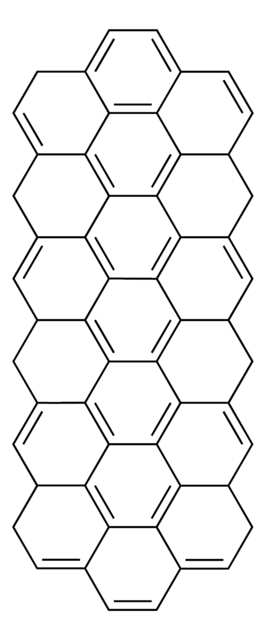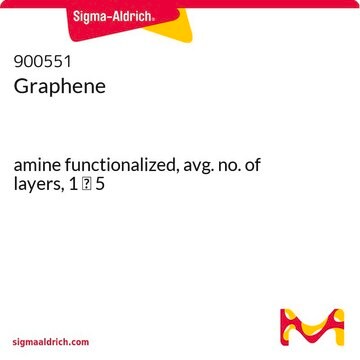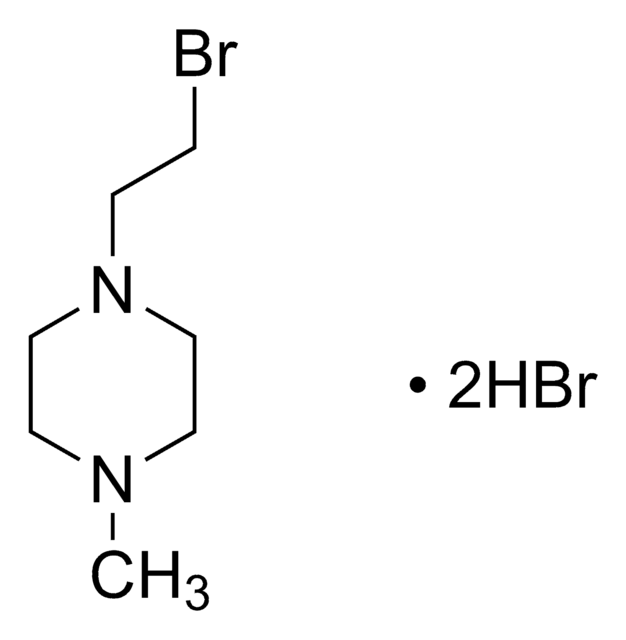797766
Graphene nanoribbons
alkyl functionalized
Synonyme(s) :
GNRs, nano-graphene ribbons
About This Item
Produits recommandés
Pureté
≥85% carbon basis (TGA)
Forme
powder
Caractéristiques du produit alternatif plus écologique
Design for Energy Efficiency
Learn more about the Principles of Green Chemistry.
sustainability
Greener Alternative Product
L × l
2-15 μm × 40-250 nm
Superficie
38 m2/g
Densité
1.5763 g/mL (He gas method)
Masse volumique apparente
0.0953 g/mL (Mercury Porosimetry)
Autre catégorie plus écologique
Vous recherchez des produits similaires ? Visite Guide de comparaison des produits
Description générale
Application
- Composites.
- Conductive inks.
- Electrodes for LiB.
- Energy storage & harvesting applications.
- Bio-medical applications.
Notes préparatoires
- Less preferred dispersing organic solvents: cyclohexanone and γ-butyrolactone.
- Aqueous dispersions are possible at 0.1 mg/mL with triton-X-100, sodium cholate and deoxycholate and cellulose-based surfactants.
Remarque sur l'analyse
ID/IG = 1.84±0.25
I2D/IG = 2.12±0.32
2D FWHM = 41 cm-1
Informations légales
Code de la classe de stockage
11 - Combustible Solids
Classe de danger pour l'eau (WGK)
nwg
Point d'éclair (°F)
Not applicable
Point d'éclair (°C)
Not applicable
Certificats d'analyse (COA)
Recherchez un Certificats d'analyse (COA) en saisissant le numéro de lot du produit. Les numéros de lot figurent sur l'étiquette du produit après les mots "Lot" ou "Batch".
Déjà en possession de ce produit ?
Retrouvez la documentation relative aux produits que vous avez récemment achetés dans la Bibliothèque de documents.
Articles
Graphene is a unique two-dimensional (2D) structure of monolayer carbon atoms packed into a dense honeycomb crystal that has attracted great interest due to its diverse and fascinating properties.
Since its discovery little more than a decade ago,1 the two-dimensional (2D) allotrope of carbon—graphene—has been the subject of intense multidisciplinary research efforts.
Graphene's unique properties spark interdisciplinary interest; its honeycomb structure offers electrical, optical, and mechanical marvels.
Graphene nanoribbons (GNRs) are quasi-one-dimensional narrow strips of graphene comprised of sp2-hybridized carbon atoms arranged into hexagonal honeycomb lattice configurations.
Notre équipe de scientifiques dispose d'une expérience dans tous les secteurs de la recherche, notamment en sciences de la vie, science des matériaux, synthèse chimique, chromatographie, analyse et dans de nombreux autres domaines..
Contacter notre Service technique







